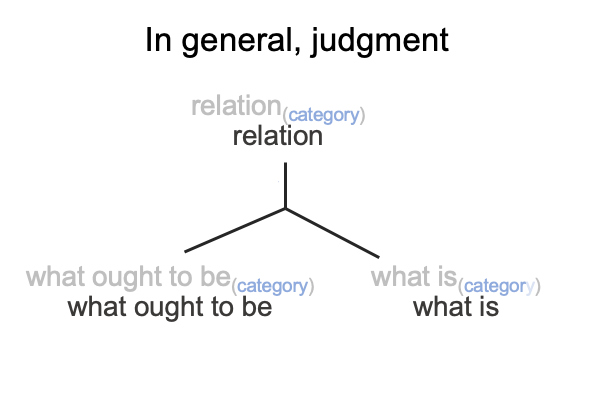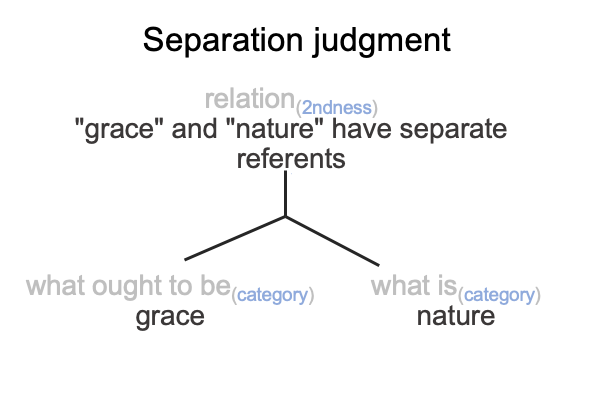0056 At this point, judgment cannot be avoided.
Here is the general structure of judgment as a triadic relation.

0057 A relation (category) brings what ought to be (category) into relation with what is (category). When each of the three elements is uniquely assigned to one of Peirce’s three categories, the judgment becomes actionable. Actionable judgments unfold according to their categorical assignments. Thirdness becomes normal context3. Secondness enters actuality2. Firstness glides into potential1.
0058 What about this general agreement that is in the Zeitgeist in Europe between the so-called “Reformation” (1500s) and the so-called “Industrial Revolution” (1800s). The agreement that “grace” and “nature” are distinct and separate (relation) anchors this element in secondness.
Everyone agrees that the separation is actual. Plus, separation characterizes the relation between “grace” and “nature”.
What about the other elements of the judgment?
Of course, “grace” should go with what ought to be and “nature” with what is.
Here is a picture.

0059 The categorical assignments to “grace” and “nature” set the stage for the historical discussion in Ross’s book.
